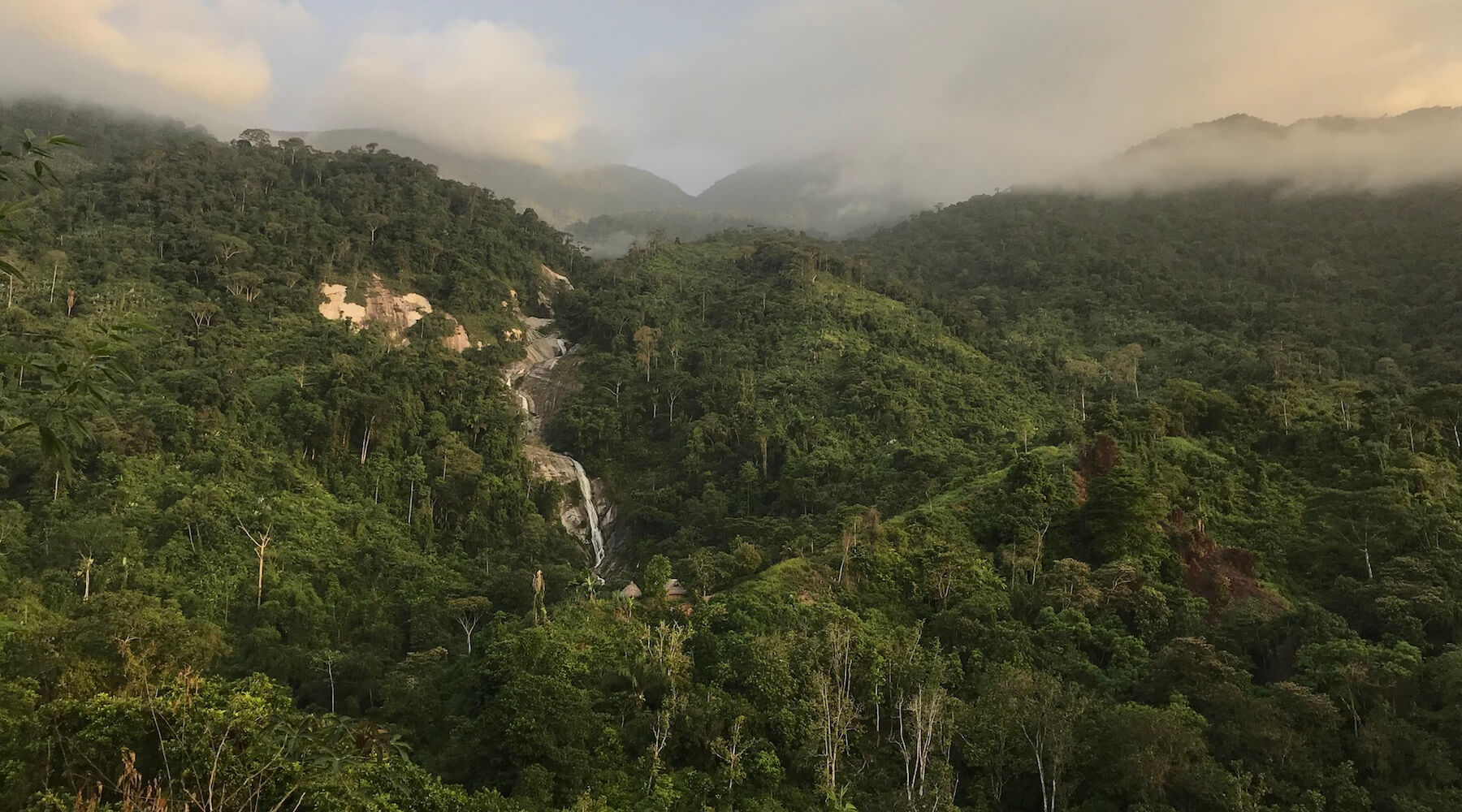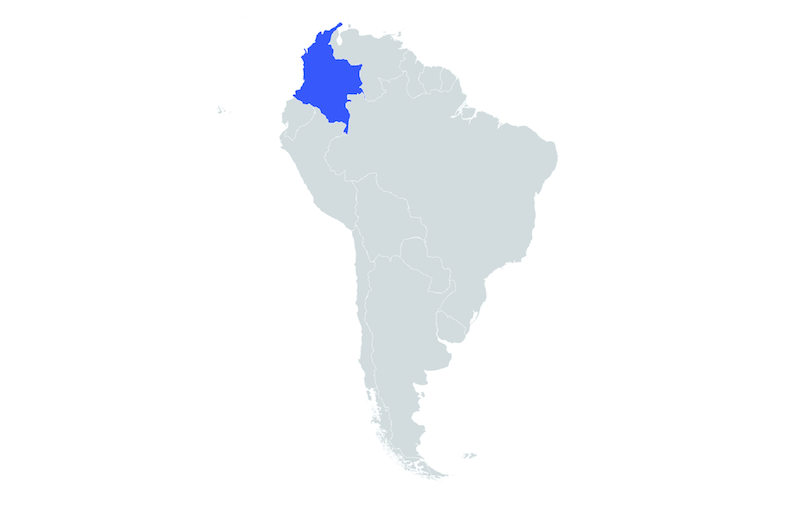
As a woman, I did not embark on a solo motorcycle journey through Colombia with a light heart. I came to document the people working to protect ecosystems, as well as the wildlife and communities that depend on those ecosystems, and I came alone.
I wish to be a window into the world of earth protection, to help share those stories and spread hope.
I’ve been living on a motorcycle for years now, different bikes on different continents. My passions have taken me from the wild places of Laos to those of Colombia. I purchased a Royal Enfield Himalayan in Bogotá this past February and have traversed more than 10,000 km since then. I’ve been seeking those who honor and protect the wild, while revealing the challenges and threats those people and projects face on the frontlines of conservation. It is my hope that greater focus and attention on their work will bring them more support.
I wish to be a window into the world of earth protection, to help share those stories and spread hope. I’ve found that being a woman on a motorcycle, alone, in far off places is a compelling way to talk about conservation to those who otherwise may not listen.
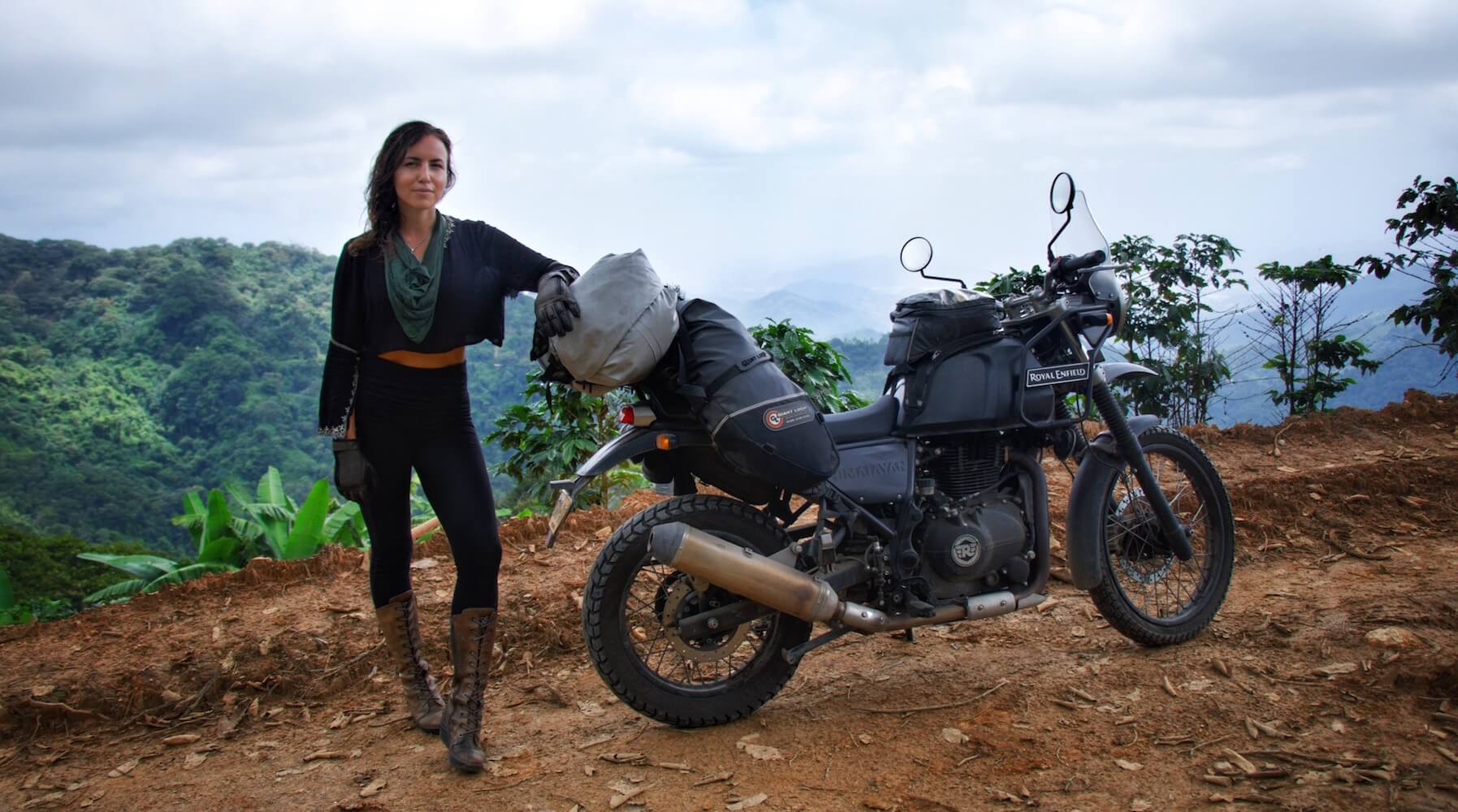
“I’ve found that being a woman on a motorcycle, alone, in far off places is a compelling way to talk about conservation to those who otherwise may not listen.”
An Environmental Paradox
Colombia is known as a “mega-diverse” country, making up only .7 percent of the global land area yet hosting 10 percent of all known species. That means that one in every 10 species on Earth is found in Colombia, home to the greatest number of bird and orchid species. Per area, Colombia is the most biodiverse country on the planet.
Now, the race is on to assess and conserve these environmental assets. Unfortunately, so is the race to extract them.
With Colombia now emerging from one of the longest armed conflicts in the world — which consisted of more than 52 years of war — tremendous change is afoot. Huge expanses of landscape that were previous war-zones are opening up to reveal their rich biodiversity, spared from the ravages of industrial development. Now, the race is on to assess and conserve these environmental assets. Unfortunately, so is the race to extract them.
In 2016, the Revolutionary Armed Forces of Colombia (FARC) signed an agreement with the government to finally put an end to more than five decades of violent conflict. With much of Colombia transitioning to peace, the environments once under control by guerrilla forces are becoming accessible and therefore vulnerable to exploitation and destruction.
This newfound peace and dissolution of the FARC, once the authority in these rebel-controlled areas, seems to have ignited a war on nature.
The hidden cost of the peace accord is therefore an environmental paradox. Though the armed guerrillas caused some environmental damage in their destruction of forest for illicit drug cultivation and frequent bombing of oil and gas pipelines, they also protected huge areas of extremely biodiverse land from development.
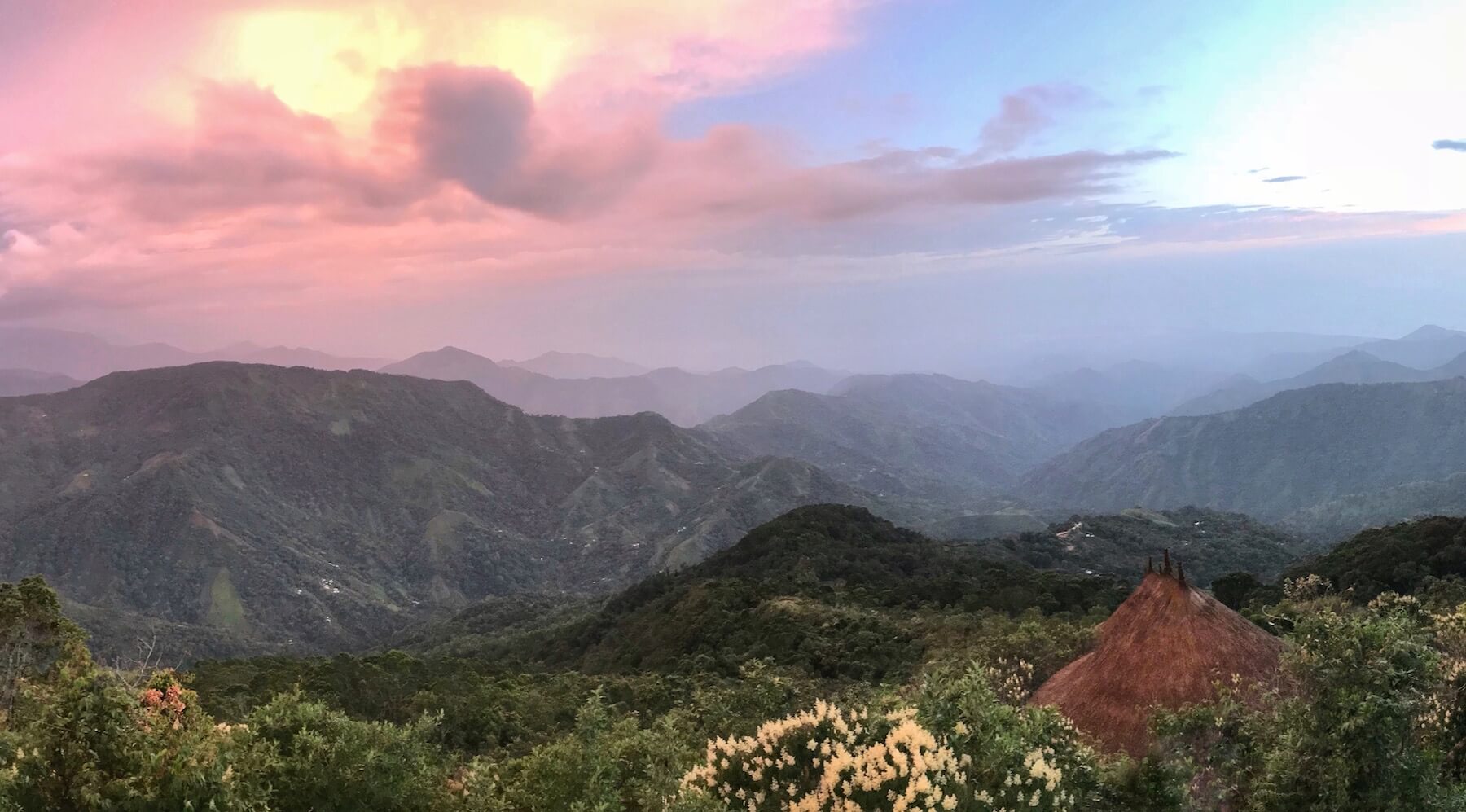
After 52 years of conflict, vast areas of Colombia that were once considered dangerous war-zones are opening up to reveal some of the most biodiverse land on Earth.
What is Measured Can be Managed
I like to tell fellow motorcyclists that if they don’t like the climate or landscape, they should just keep riding. It is bound to change drastically, and very quickly. As the nation with the most geographical diversity on the planet, Colombia has an astounding 314 types of ecosystems, including Amazon rainforests, dry forests, high alpine Andean ecosystems called el páramo, tropical coastlines, and arid deserts.
As the nation with the most geographical diversity on the planet, Colombia has an astounding 314 types of ecosystems.
In the North, you can stand with your feet in the Caribbean and gaze upon snow-capped mountains, the Sierra Nevadas del Santa Marta, within them the highest mountain closest to the sea in the world, a pyramid made of granite, containing all the ecosystems within itself.
It seems there is a fork in the road for the wild lands of Colombia; their resources could be logged, mined, and poached, stripped away for short-term profit. Alternatively, they could be protected, drawing visitors in for their natural beauty, creating value for locals with ecotourism, and invaluable plant products sustainably harvested. Scientists report that a third of all Colombia’s plant life has economic value, particularly in the development of pharmaceuticals. Of course, these wild lands also have inherent value through natural services like clean air, water, and nutrient rich earth.
In collaboration with the Colombia Bio Project, scientists, universities, and the environmental ministry are racing to inventory the poorly studied or completely unexplored regions that make up the territories once occupied by the FARC. They must assess and protect the biodiverse regions and important corridors for conservation and sustainable development before they are stripped of their natural resources.
The objective is to catalogue not just the species of birds, mammals, insects, and plants, but even the microbes present in the soil. With so much of Colombia inaccessible due to past violent conflict, many of the species within them are still unknown to science. With growing access to these regions, deforestation is on the rise, despite the country’s global pledge for the opposite.
A project to monitor the changes in forest cover by connecting data from satellites and monitoring systems has been launched by the Platform for Ecological Analyses on Colombian Ecosystems (PEACE). Eighty-four percent of the country’s deforestation has taken place in areas under the protection of the government, such as in national parks.
Eighty-four percent of the country’s deforestation has taken place in areas under the protection of the government, such as in national parks.
In 2016, the year of the peace accord signing, deforestation in Colombia increased by 44 percent from the previous year. The satellite images from PEACE, in collaboration with NASA, are therefore essential for monitoring how these infractions take place in real time. This data stands in stark contrast to Colombia’s promise of reaching zero deforestation by 2020, a goal they will likely have to push back to 2025. Norway, Germany, and the U.K. have committed to giving Colombia nearly $300M USD to help them attain their goals, through results-based payments for reaching their reduced deforestation benchmarks.
Large-scale deforestation was observed by drones over Tinigua National Park in the beginning of 2018. This park is extremely important, as it is the only area in the country that connects the Orinoco high plains with the Andean mountain forests and the rainforests of the Amazon.
Forested corridors for jaguars, ocelots, monkeys, and other wildlife that require canopy cover to move through landscapes (such as the woolly monkey, which travels from branch to branch but never on the ground), have been replaced by illicit cultivation (mainly coca), pastures, and small-scale land grabs. Residents say that former FARC members have redistributed the territory, thus complicating the security situation of the park itself and forcing park officials to leave. This case demonstrates some aspects of Colombia’s failure to enforce what existing environmental laws it already has in place.
Without knowledge of the extent of biological richness existing in its vastly different landscapes, Colombia cannot make informed decisions about conservation and sustainable development.
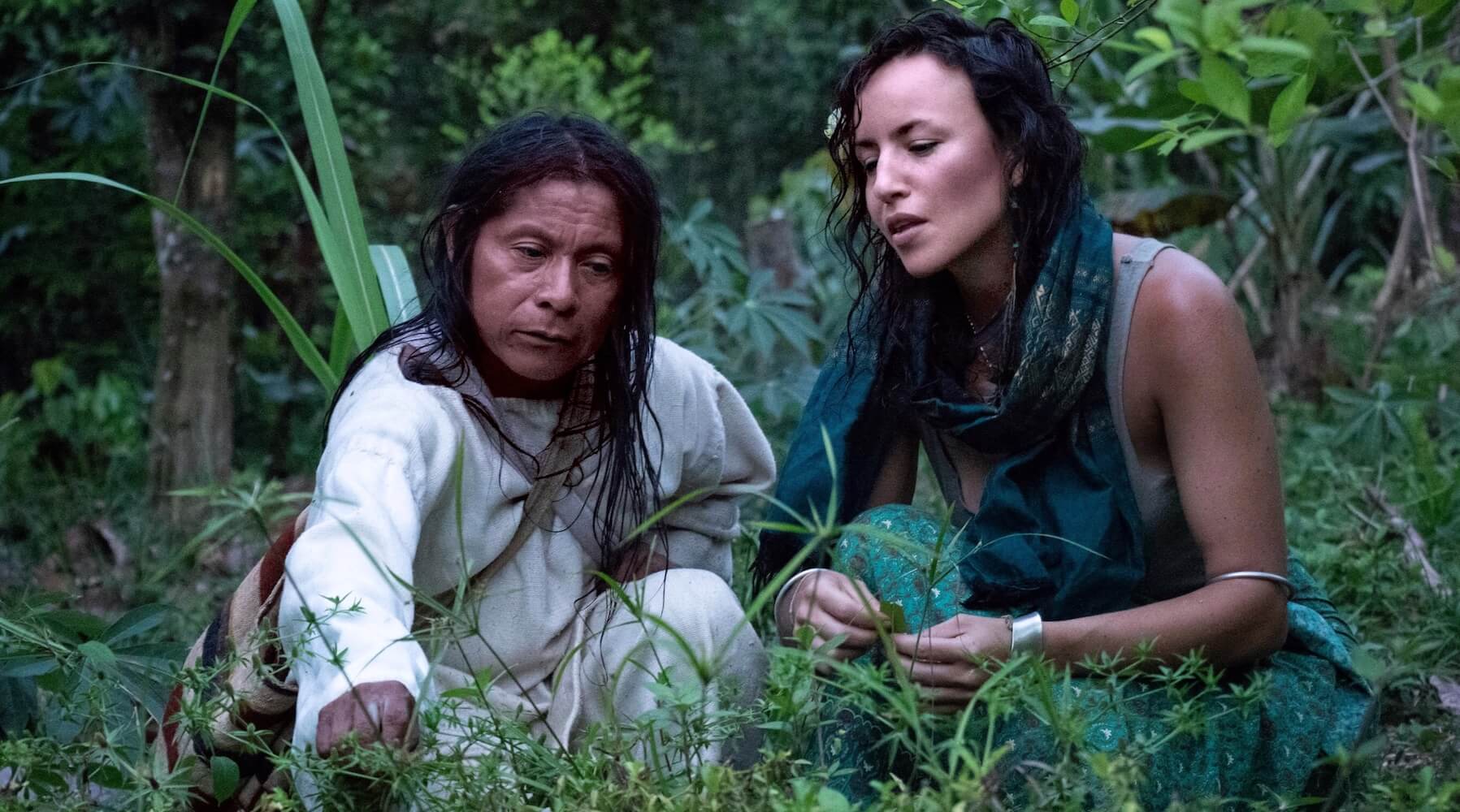
Protecting indigenous peoples’ rights and land seems like an obvious choice as studies have shown that deforestation rates are lower and biodiversity and carbon sequestration are higher in indigenous territories.
Guardians of the Forest
Perhaps that is why those closest to nature, those who have resided in the same lands for generations, those who depend on the forest and see it as part of who they are, make the best stewards for the Earth. Countless indigenous cultures have proven themselves as effective guardians of the forest. They see their lands as vital to their values, identities, and spirituality.
Indigenous territories, including lands and waters, embody 80 percent of the world’s biodiversity.
Indigenous territories, including lands and waters, embody 80 percent of the world’s biodiversity. In the territories where Indigenous Peoples’ rights to their lands have been secured, studies show that deforestation rates are lower and therefore biodiversity and carbon sequestration is higher.
Anthropologist Wade Davis once documented the words of Mamo Camilo, an Arhuaco of the Sierra Nevadas de Santa Marta, when he said, “Peace will not matter if it is only an excuse for all sides of the conflict to come together to maintain a war against nature.”
The Arhuaco is one of four tribes living in the northern mountains of Colombia, descendendants of the Tayrona people, a people never fully conquered by the Spanish. They believe they exist to protect the Earth, that our planet is a living being, and humanity its children. As caretakers, to keep the natural orders in balance, they make payments of cotton from the high mountains, imbued with their thoughts of gratitude for services rendered from the earth.
The Mamos are somewhat like shamans; they are “divinely chosen”, but raised separate from the others, in darkness. They live for years in dug-out huts or caves, only coming out at night. They develop an ability to listen to the Earth, to know deeply the celestial bodies, to read messages from observing the movement of water. They have felt the changes of the “Great Mother” and say that the destruction, exploitation, and extraction of resources will lead to our own demise.
The Kogi, like the Arhuaco, reject our “progress and modern comforts,” and are not welcoming to outsiders. I was therefore extremely fortunate to be allowed into their territory, to spend time navigating their lands, the Sierra Nevadas de Santa Marta. With the Nativa Foundation, our objective was to set up a camera trap to document the elusive tapir, an ancient mammal related to the rhinoceros and horse, and prime prey for the jaguar.
The Sierra Nevada de Santa Maria has been referred to as one of the world’s most irreplaceable nature reserves, with much of its wildlife found nowhere else on Earth.
We set up our camera near a small stream, where we found tracks of both animals. I removed my shoes and let the Kogi lead me through the mountains, bathing and drinking from their rivers, sleeping in their traditional huts. They have an easy strength about them, perhaps one that comes from living in such harmony with nature, traversing the rugged mountain slopes of the Sierras, and tending the land in a way that it continues to provide for generations to come.
Like the Amazon, the Sierra Nevada de Santa Marta is a region celebrated for its biodiversity. It has been referred to as one of the world’s most irreplaceable nature reserves, with much of its wildlife found nowhere else on Earth. Recent discoveries, such as frogs that secrete antibiotics and a vaccine for yellow fever, are being documented as reason to extend the protective boundaries of the national parks and indigenous lands.
In order to safeguard the riches of one of Earth’s most biodiverse regions, it seems only obvious that governments should continue recognizing and protecting the land rights of indigenous peoples.

With much of wild Colombia spared from industrial development, the race is on to protect as much biodiversity as possible before it is destroyed.
A Paradise, Lost?
With wilds of Colombia spared, there is a tremendous amount riding on the post-conflict efforts to assess the value of these places so that they can be protected and sustainably managed. Without fully understanding what exists in the forests, however, the establishment will not be able to make informed decisions on how best to proceed.
There are some incentives in place, such as a 600,000 Colombian Pesos (roughly $200 USD) monthly compensation for families committed to preserving land rather than developing it. Though this is one possible solution, we do not yet know if this method works long term.
The jungles and all the biodiversity, potential medicines, and unknown treasures are being sacrificed for quick money.
The jungles and all the biodiversity, potential medicines, and unknown treasures are being sacrificed for quick money. This looks like expanding agricultural frontiers, such as that for cattle, road infrastructure projects, illegal mining, and increasing coca farms. Coca production has been on the rise since 2013, after the Free Trade Agreement was signed in 2012, its initial effects hitting the agriculture industry and leaving many campesinos (rural farmers) with little choice but to cultivate coca.
Looking towards the future, it is clear that the myopic view of solely taking down illicit crop growers, illegal loggers, miners, and poachers will not solve this problem of livelihood for the campesinos. The solution lies in setting forth a different political structure and economy that enables them to not only put food on the table, but to thrive, all while simultaneously keeping the forest intact — a benefit to the entire globe.
With the plethora of biodiversity that still exists in these spared wild places, it is easy to imagine empowered locals setting up environmental tourism projects, such as bird and orchid expeditions, botanical gardens, where rare local species — including those with pharmaceutical value — could be cultivated and sold.
Even now, no one knows these forests better than the armed rebels who once controlled them. Perhaps it will be through the recent scientific discoveries, collaborative expeditions led by researchers and guided by past FARC members, which may lead towards sustainable sources of income for communities, ex-combatants, and ultimately, the protection of the forests.


